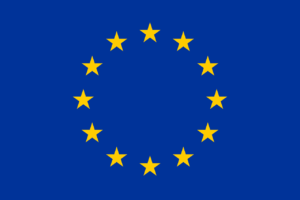The European Union has achieved a groundbreaking milestone by enacting the markets in crypto-assets (MiCA) regulation. Eu became the pioneer in implementing a comprehensive crypto law. This regulation intends to establish uniform regulations and harmonized rules across the EU, even though some states already have national laws for crypto-assets.
To understand the idea of it, it is essential to examine MiCA’s both pros and cons. By exploring these aspects, we can gain a deeper understanding of the implications of this pioneering regulation and its impact on the crypto landscape in the European Union.

WHAT MiCA REGULATION IS BRINGING ON?
On April 20, 2023, the European Union parliament gave its approval to MiCA. This new legislation, set to take effect between mid-2024 and early 2025, is the first and singular legislation of its nature globally. The enactment of MiCA sets a precedent and might shape the cryptocurrency assets landscape in Europe.
The objective is to seamlessly integrate cryptocurrencies into the financial system, ensuring a smooth and painless transition. By implementing it, the aim is to establish a framework that provides a stable regulatory environment, bolstering confidence among consumers and encouraging the growth of the crypto industry. The ultimate goal is to achieve a delicate equilibrium between regulation and innovation and to facilitate the convergence of crypto and traditional finance systems with minimal disruption, enabling a harmonious coexistence.
While MiCA’s intentions are praiseworthy, there are valid concerns surrounding its practical implementation. Skeptics contend that the regulation may impose a standardized regulatory framework for decentralized finance (DeFi), potentially stifling innovation and hindering the flexibility that characterizes this sector. This one-size-fits-all approach could impede the ability of DeFi projects to adapt and evolve according to market demands.
Another point of contention revolves around the potential increase in compliance costs for decentralized exchanges (DEXs) and DeFi platforms. As these platforms typically operate on decentralized networks, implementing the necessary compliance measures may prove to be a significant financial burden. This could result in higher entry barriers for smaller players and startups, limiting competition and innovation within the DeFi space.
Additionally, privacy concerns come into play. With MiCA’s aim to establish a comprehensive regulatory framework, there is a possibility that the personal data of users and investors may become more exposed, leading to privacy risks and potential misuse of sensitive information

ENSURING EFFECTIVE IMPLEMENTATION OF MiCA
These concerns highlight the need for careful evaluation and consideration to ensure that MiCA’s execution addresses these potential drawbacks.
The successful implementation of it necessitates finding a compromise solution that bridges the gap between the crypto world and state regulatory authorities.
It is crucial to strike a delicate balance that accommodates the unique characteristics and benefits of the cryptocurrency ecosystem while also addressing the concerns and requirements of governments and regulatory bodies.
This compromise solution should aim to create a regulatory framework that provides clarity, legal certainty, and consumer protection without stifling innovation or impeding the growth of the crypto industry. By fostering open dialogue and collaboration between the crypto community and state actors, a harmonious and effective implementation of MiCA can be achieved, ensuring that the interests of both parties are appropriately considered and accommodated.
